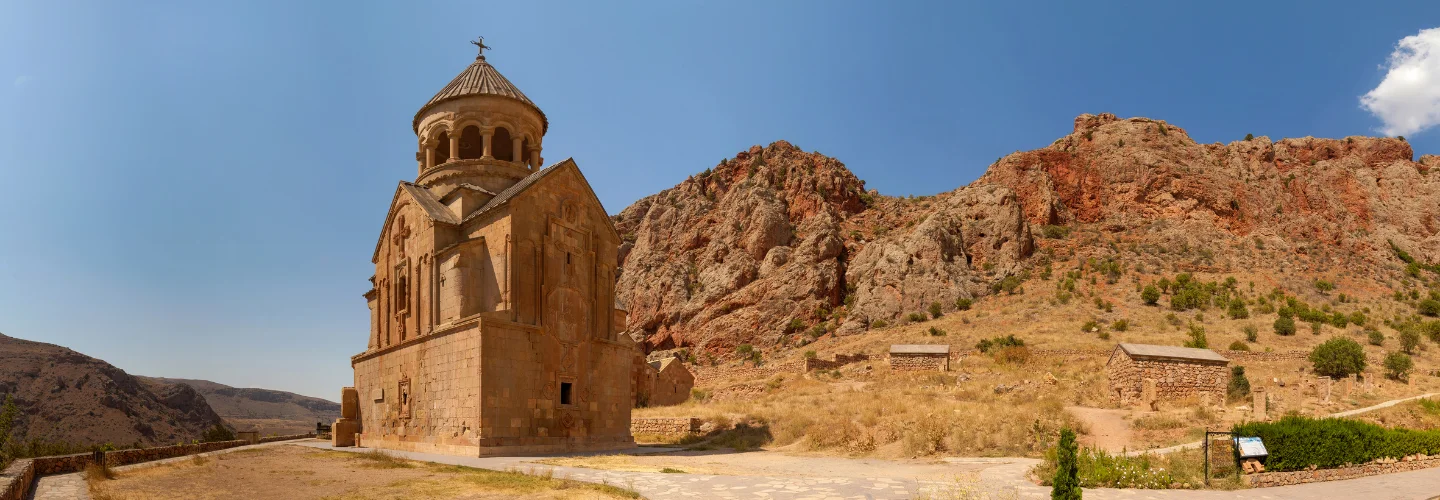About Noravank
Monasteries are one of Armenia’s defining characteristics and the example at Noravank is one of the most beautiful in the whole country. Sheer brick-red cliffs shield the monastery, which was built in the 13th century. It is famous for its Astvatsatsin (Holy Mother of God) church, while the story goes that the monastery was saved by God himself when Armenia was conquered by the Mongols hundreds of years ago. If you only choose to go to one monastery during a trip to Armenia, Noravank would be an extremely good selection – thousands of people visit every year.
THE CENTURIES-OLD ARMENIAN MONASTERY KNOWN as Noravank is a hauntingly preserved religious complex sitting in a picturesque valley. However it may not be standing today if it were not for the eyes on a representation of God.
Built in the 13th century, the monastery is a lovely example of the ornate architecture of the period. The site is comprised of three surviving churches, each decorated in intricate designs and religious reliefs. The sculptor of the grandest portions of Noravank was a man by the name of Momik, who created the lovely stonework that survives today. He also carved a number of uniquely Armenian religious monuments known as “khachkars” which usually depicted an image of a cross surmounting a circular symbol. The sculptor is also buried in a simple grave at the site.However for all of its crumbling historic beauty, Noravank almost didn’t make it out of the Middle Ages.
However for all of its crumbling historic beauty, Noravank almost didn’t make it out of the Middle Ages.


Comment (0)